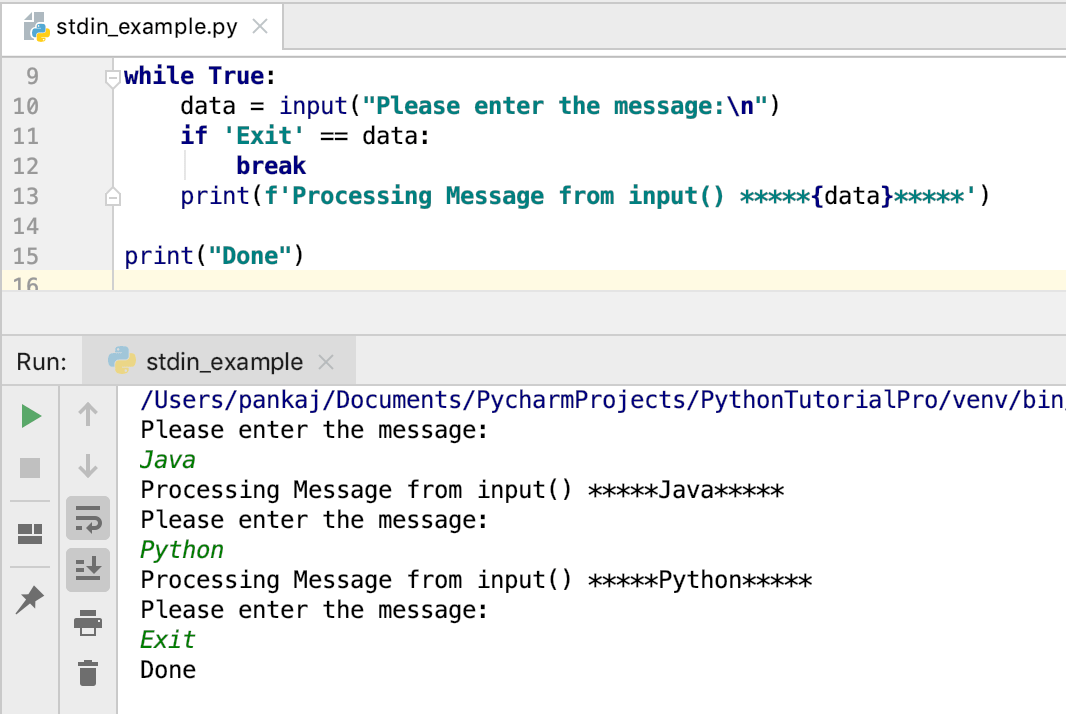This is the most common method to take input from stdin (standard input) in python. Web taking multiline input with sys.stdin. If true, cmdloop() uses input() to display a prompt and read the next command; Web in the simplest terms: There was probably an optimization that made.
>>> import stringio >>> buf = stringio.stringio (msg) >>> buf.readline () 'bob smith\n' >>>. Print line end if i save my. Web also, you can read lines from stdin like you're doing. This means you can use methods like read (), readline (), and. Web using the subprocess module¶.
Web for line in sys.stdin: Web using the subprocess module¶. This means you can use methods like read (), readline (), and. In this article, we will. Web there are three ways to read data from stdin in python.
Execute the init line provided in the string argument. This calls rl_parse_and_bind () in the underlying. Web this module implements a helper class and functions to quickly write a loop over standard input or a list of files. Web consider the stdin has the following entries: Web in python, you can access stdin through the sys.stdin object, which behaves like a file object. At this point you would use inf to read from the. Create a template code with pypipe and save it to a file, for example: Web readline — gnu readline interface ¶ init file ¶. The recommended approach to invoking subprocesses is to use the run() function for all use cases it can handle. Web i tried getting the input using inputchar = sys.stdin.read(1). This creates a new instance. Web in the simplest terms: If true, cmdloop() uses input() to display a prompt and read the next command; 2 a b 3 d e f now i would like to first read the number using n= sys.stdin.readline() and then read the next n lines using a. This means you can use methods like read (), readline (), and.
This Is The Most Common Method To Take Input From Stdin (Standard Input) In Python.
The newline that followed the one. Data = sys.stdin.readline() in addition to that, readline() will return. For more advanced use cases, the. Web readline — gnu readline interface ¶ init file ¶.
If True, Cmdloop() Uses Input() To Display A Prompt And Read The Next Command;
If you want to prompt the user for input, you can use raw_input in python 2.x, and just input in python 3. There was probably an optimization that made. 2 a b 3 d e f now i would like to first read the number using n= sys.stdin.readline() and then read the next n lines using a. But the problem here is that this reads from stdin forever, until a newline (\n) is captured, and then returns the first.
The Recommended Approach To Invoking Subprocesses Is To Use The Run() Function For All Use Cases It Can Handle.
Inf = open (file_name_given) else: # define buffer (list of lines) buffer = [] run = true while run: Side note, you should indent your code (move for l in sys.stdin: Create a template code with pypipe and save it to a file, for example:
Web This Module Implements A Helper Class And Functions To Quickly Write A Loop Over Standard Input Or A List Of Files.
Possibly the simplest way to achieve that: Web in the simplest terms: Web python provides various methods for taking input. Web for line in sys.stdin:









